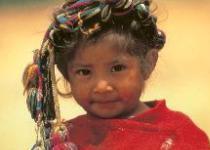
Guatemala Human Rights Commission/USA
.jpg)


.jpg)
Grotesque Deaths Recall the War
Ten women have been mutilated and decapitated so far this year; their bodies were abandoned in public places, like during the civil war. Security forces maintain that in the majority of cases, these murders correspond with gang problems.
According to the unit responsible for investigating the violent deaths of women, part of the Prosecutors Office of Crimes Against Life, five of these findings were in the capital – four in Zone 18 and one in Zone 11 – while the other five were in the municipalities with the highest levels of violence.
In these cases it is difficult to quantify how many deaths are from dismemberment or decapitation because investigations only take into account that some part of the body was mutilated.
For example, last May 7, at Kilometer 5 on the Atlántico route, the mutilated body of 19 year-old Jéssica Carolina Franco Ramos was found in a ditch, one day alter she was abducted.
Eduardo Salvador González Velásquez, known as “el Luna,” and Luis Jefferson Rosales Flores, known as “el Mosca,” were caught and accused of the crime. The first was captured in an operation in Zone 18, the second in a shopping center. Both are members of gangs.
On March 10, Ingrid Paola Cruz Montalván, 35, was dismembered. Her remains appeared in Zones 6 and 18. She was a leader of a clique of the Salvatrucha gang and according to the National Civil Police had been in jail several times for extortion, robbery, assault, possession and drug use.
Despite attempts to find those responsible for the murder, the results were unsuccessful.
AS IN THE PAST
Maya Alvarado, of the National Union of Guatemalan Women (UNAMG), said that at present these acts of extreme violence are repeating the past, since during the internal armed conflict it was common to find dead bodies from this sector of the population in public places and with signs of torture.According to professionals, violent deaths are a way for organized crime and gangs to demonstrate their power and mark their “territory,” which seeks to undermine and discriminate young women and girls.
Alvarado said that the deaths of men are less grotesque than those of women, since in most of the cases women have suffered sexual violence before being killed.
According to the representative of UNAMG, the problem arises because women are still viewed with a certain degree of machismo, in which they must obey orders and submit to societal expectations.
GANGS
Members of the Specialized Criminal Investigation Division (DEIC) and the Public Ministry (MP) agree that most of the recent cases are linked with problems between gangs, since investigations indicate that 80 percent of the cases are related to gangs.
According to the DEIC investigator, the crimes are committed with cruelty, either because of disputes between rival gangs or because the girl made a formal denouncement of members of the gang to which she belonged.
The source says that these cold-blooded murders are part of satanic rituals done by the gangs, because this practice is well known. “We can identify when the murder was carried out by gang members,” he says.
The investigator does not rule out that organized crime and drug traffickers are behind the murder of women, but emphasizes that he doesn’t think that they are involved in the dismemberments because they use other methods to commit crimes.
According to the source, parallel groups use logistics, heavy weapons, and sophisticated vehicles to commit acts while gangs use certain practices like quartering, which has been identified for many years.
WITHOUT JUSTIFICATION
Sandra Morán, of the Women’s Sector, says that the fact that a female could be involved with criminal groups does not justify murder, much less the brutality with which these practices are carried out.
“We believe that regardless of whether a person is related to a criminal group or is part of a gang, killing her is never justified. We believe that the law and judicial processes exist for people who have committed any type of crime,” said Morán.
The representative of the organization believes that violent acts against women only reflect “the impressive and terrible hate against women and their bodies,” who can be terrorized in this way.
Morán concluded that the Law Against Femicide is a useful tool to counter this scourge, because now a legal mechanism exists that can be used to prevent cases involving any type of violence from going unpunished.
Home | Site Map | Contact Us
3321 12th Street NE, Washington, DC 20017
This site is maintained by the Guatemala Human Rights Commission/USA
as a means of informing the general public of the Commission's work
on behalf of the people of Guatemala
